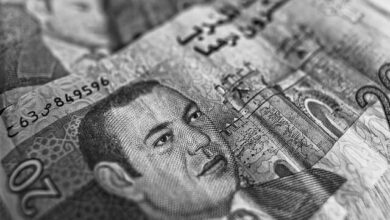Property Vs Asset: What’s the Difference?
When delving into the realms of finance, investment, and ownership, two fundamental concepts stand out: property and asset. Property typically refers to physical possessions or belongings, whereas asset encompasses a broader spectrum, including both tangible and intangible items.
Understanding the nuances between these terms is crucial for making informed decisions in various financial domains.
Property Vs Asset (A Comparison)
| Property | Asset |
|---|---|
| Property refers to the physical possessions, typically tangible assets like real estate or vehicles, characterized by their ability to be touched and felt. | An asset is a broader term encompassing both tangible and intangible items, including investments, intellectual property, and financial instruments. |
| Property is a narrow focus on physical possessions like real estate, excluding intangibles. | Asset has a broader definition encompassing both tangible and intangible items. |
| It serves personal or practical purposes, offering shelter (real estate) or utility (vehicles). It is primarily oriented towards personal use or practical needs. | They are acquired with the intent of generating income or appreciation and are often chosen strategically for their role in wealth accumulation, serving a financial purpose. |
| A property may be appreciated, especially in the case of real estate. | An asset is typically acquired with a clearer expectation of value appreciation. |
| A property can be less liquid, particularly in the case of real estate, which may take time to sell and transfer ownership. | An asset may vary in liquidity; some assets are easily converted to cash (e.g., stocks), while others, like real estate, may require more time and effort for liquidation. |
What is Property?
Property, in its essence, refers to tangible possessions owned by individuals or entities. These can include real estate, vehicles, machinery, or personal belongings. The concept of ownership and the tangible nature of these assets are key aspects of understanding property.
Characteristics of Property
1. Tangibility:
The primary characteristic of property is its tangibility. Physical presence distinguishes property from abstract assets. Real estate, for instance, exists physically, providing a tangible form of ownership.
2. Ownership Rights:
Ownership rights are inherent in the concept of property. Possessors have legal control over their belongings, allowing them to use, sell, or transfer ownership as they see fit.
3. Examples of Properties:
Properties come in various forms, from residential and commercial real estate to personal items such as cars, electronics, and furniture. The diversity of property highlights its encompassing nature in our daily lives.
What is an Asset?
Assets extend beyond the tangible realm, encompassing both physical and intangible entities that hold value. They are resources owned by individuals, businesses, or entities that can contribute to future financial benefits.
Characteristics of Asset
1. Broad Definition:
Assets have a broader definition, ranging from physical possessions like real estate to intangibles like patents or trademarks. This inclusivity distinguishes assets from the more narrowly defined concept of property.
2. Value and Appreciation:
Unlike some properties, assets are often expected to appreciate in value over time, contributing to the overall wealth of the owner. Investments, stocks, and bonds exemplify assets that can grow in value.
3. Liquidity:
Asset liquidity, or the ease with which an asset can be converted to cash, is a vital characteristic. Cash and certain investments are highly liquid, while real estate may take time to sell.
4. Examples of Assets:
Assets include a wide array of items, from cash and stocks to intellectual property and business investments. Each type of asset carries its own set of characteristics and considerations.
Key Differences Between Property and Asset
- Broadness of Definition: The term “asset” has a broader definition, covering both tangible and intangible items, including investments, intellectual property, and financial instruments. Property, on the other hand, is more narrowly focused on physical possessions.
- Purpose and Functionality: Properties often serve personal or practical purposes, providing shelter (real estate) or utility (vehicles). In contrast, assets are typically acquired with the intent of generating income or appreciation, emphasizing their role in wealth accumulation.
- Value Appreciation: While certain properties, like real estate, may appreciate, assets are generally acquired with a clearer expectation of value appreciation. Investments, stocks, and bonds exemplify assets that are strategically chosen for their growth potential.
- Liquidity: The liquidity of assets varies, with some easily converted to cash (cash, stocks) and others requiring time and effort (real estate). On the other hand, property, especially real estate, can be less liquid due to the time it takes to sell and transfer ownership.
Real Estate as a Subset of Property
A. Types of Real Estate:
Real estate, a significant subset of property, encompasses residential, commercial, and industrial properties. Residential properties include homes and apartments, while commercial real estate comprises offices, and retail spaces, and industrial real estate involves factories and warehouses.
B. Investment in Real Estate as a Property:
Investing in real estate offers individuals the opportunity to acquire tangible assets with the potential for value appreciation. Real estate investment involves purchasing properties with the expectation of rental income or capital gains through property value appreciation.
C. Real Estate as an Asset:
Real estate, being both property and an asset, embodies dual characteristics. While it provides shelter and utility (property aspect), it also holds investment value, generating income and potential appreciation over time (asset aspect).
Conclusion
In conclusion, the distinction between property and asset is pivotal for anyone navigating the realms of finance and ownership. Properties, with their tangible nature and ownership rights, serve practical and personal purposes.
Assets, with a broader definition and focus on value appreciation, are integral for wealth accumulation and financial growth. Real estate stands as a notable subset, embodying both property and asset characteristics.



